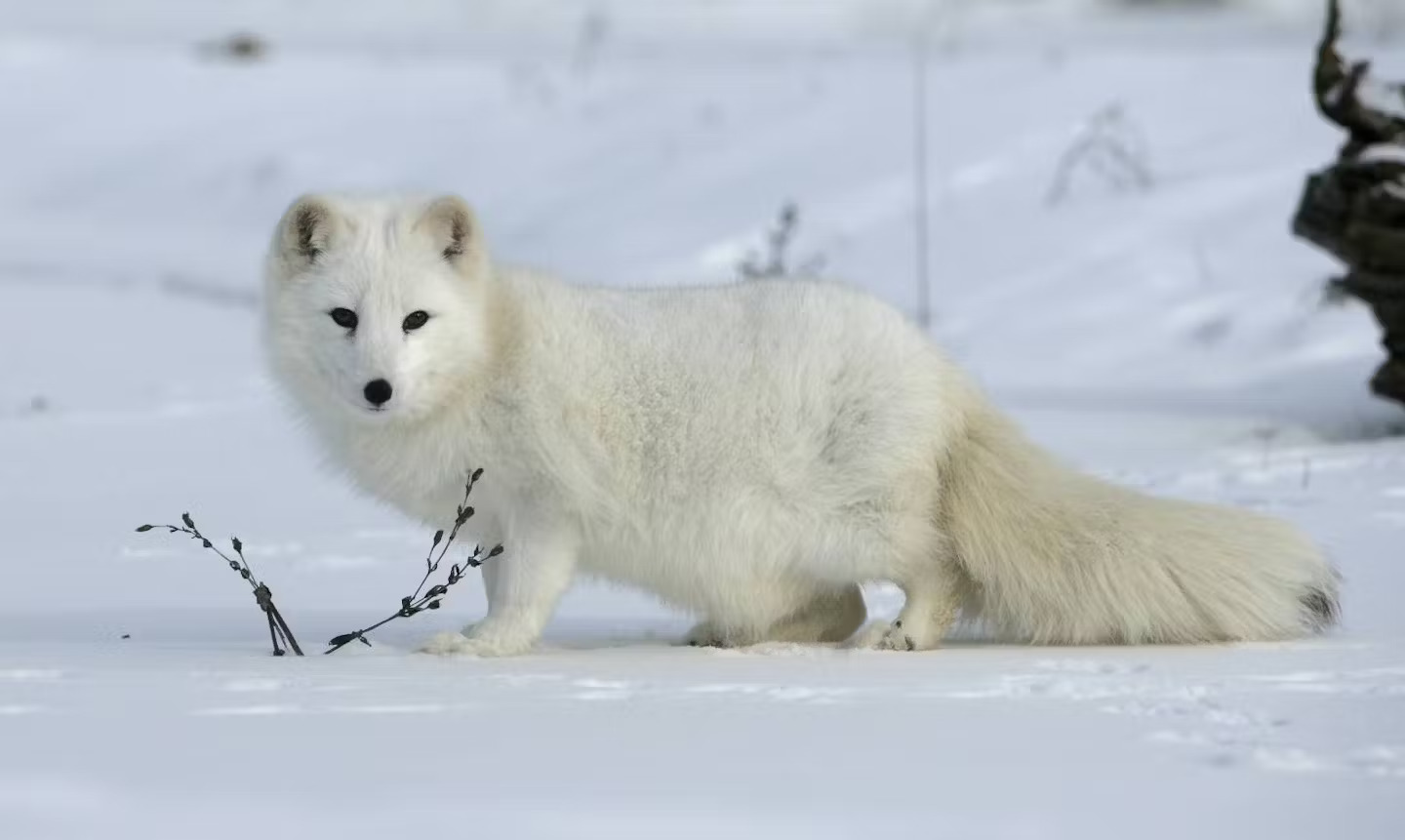Exploring the Arctic with the Arctic Fox
-

- by Admin
- Aug 24, 2024

Imagine spending every day in the winter in below freezing temperatures, being pushed around by strong wind gusts. What would you need to stay warm? For the arctic fox, staying warm in the arctic tundra, in temperatures as low as -50°C (-58°F), means having dense fur, a nice thick layer of fat, and a compact body to retain heat.
Arctic foxes, also known as polar foxes, white foxes or snow foxes, are about 60 cm (2 ft.) long, less than 30 cm (1 ft.) tall, and weigh up to about 9 kg (20 lb.). That’s about the size of a large house cat.
They have bushy tails that they can wrap around themselves for extra warmth while they sleep. They also have fur on the bottom of their feet. This helps them conserve heat and provides traction so they don’t slip on the ice.
Changing Colors for the Seasons
Arctic foxes change colors based on the season. In the summer, they are a brown color. But as the days shorten, the decrease in daylight triggers their summer coats to shed and their winter coats to grow in.
For most arctic foxes, their winter coat is white to blend in with the snowy surroundings. But some arctic foxes have a blue color morph. These “blue foxes” are a dark charcoal color year-round. In the winter, their coats are still charcoal colored, but a somewhat lighter version. Blue foxes can often be found on the Aleutian and Pribilof Islands where the coastlines are snowless.
What Arctic Foxes Eat
Arctic fox eating
Arctic foxes are meat-eating hunters and opportunistic eaters. They primarily hunt for small rodents called lemmings. However, they also eat other rodents, fish, birds, insects, eggs, and carrion (dead animals). Sometimes they follow larger predators, like polar bears or wolves, to eat their leftovers. Although they generally eat meat, arctic foxes will also eat berries and seaweed.
Arctic foxes make their home in a den they dig out of the earth or snow. They may also create their den under a pile of rocks. Every den will always have at least two entrances. They move their den throughout the year because they travel to find food.
Arctic Fox Reproduction
In the spring and summer, arctic foxes live in family groups, consisting of a male, a female, and their kits. Sometimes another female without her own kits will help raise kits in their group. Other times, several females will live together in a large den.
Usually, female arctic foxes give birth to about 5-8 kits, though there could be as many as 15 kits in a litter. The kits are dark brown with white facial markings. They are weaned when they are 2-4 weeks old.
Predators of the arctic fox include polar bears, wolves, grizzly bears, wolverines and golden eagles. They are also hunted by humans. The typical lifespan for an arctic fox in the wild is 3-6 years though they could live up to 10 years.
0 Comments:
Leave a Reply